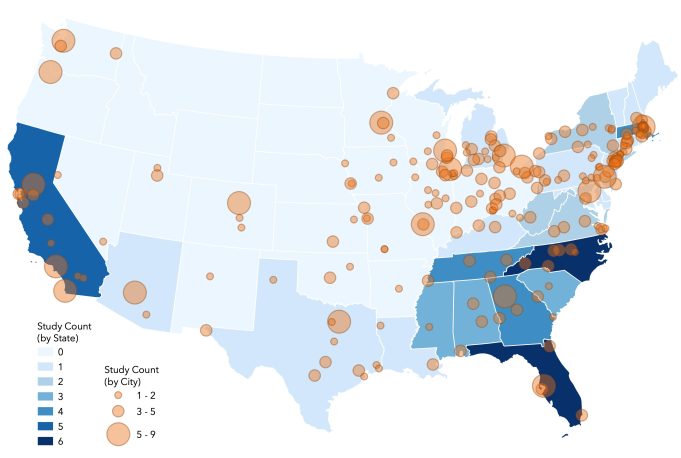
Satellite Data for Environmental Justice: A scoping review of the literature in the United States
A review of 81 articles highlights important ways that satellite data contributes technical advantages for environmental justice research. Satellite data can thus support targeted interventions or influence planning and policy changes – though significant work remains to facilitate the application of satellite data for greater policy and community impact. Course XVI PhD student Ufuoma Ovienmhada (Space Enabled) collaborated on this project with members of NASA HAQAST.
Authors: Tanya Kreutzer Sayyed, Ufuoma Ovienmhada, Mitra Kashani et al.
Citation: Environmental Research Letters; February 13, 2024
Abstract:
In support of the environmental justice (EJ) movement, researchers, activists, and policymakers often use environmental data to document evidence of the unequal distribution of environmental burdens and benefits along lines of race, class, and other socioeconomic characteristics. Numerous limitations, such as spatial or temporal discontinuities, exist with commonly used data measurement techniques, which include ground monitoring and federal screening tools. Satellite data is well poised to address these gaps in EJ measurement and monitoring; however, little is known about how satellite data has advanced findings in EJ or can help to promote EJ through interventions. Thus, this scoping review aims to (1) explore trends in study design, topics,geographic scope, and satellite datasets used to research EJ, (2) synthesize findings from studies that use satellite data to characterize disparities and inequities across socio-demographic groups for various environmental categories, and (3) capture how satellite data are relevant to policy and real-world impact. Following PRISMA extension guidelines for scoping reviews, we retrieved 81 articles that applied satellite data for EJ research in the United States from 2000 to 2022.
The majority of the studies leveraged the technical advantages of satellite data to identify socio-demographic disparities in exposure to environmental risk factors, such as air pollution, and access to environmental benefits, such as green space, at wider coverage and with greater precision than previously possible. These disparities in exposure and access are associated with health outcomes such as increased cardiovascular and respiratory diseases, mental illness, and mortality. Research using satellite data to illuminate EJ concerns can contribute to efforts to mitigate environmental inequalities and reduce health disparities. Satellite data for EJ research can therefore support targeted interventions or influence planning and policy changes, but significant work remains to facilitate the application of satellite data for policy and community impact.

